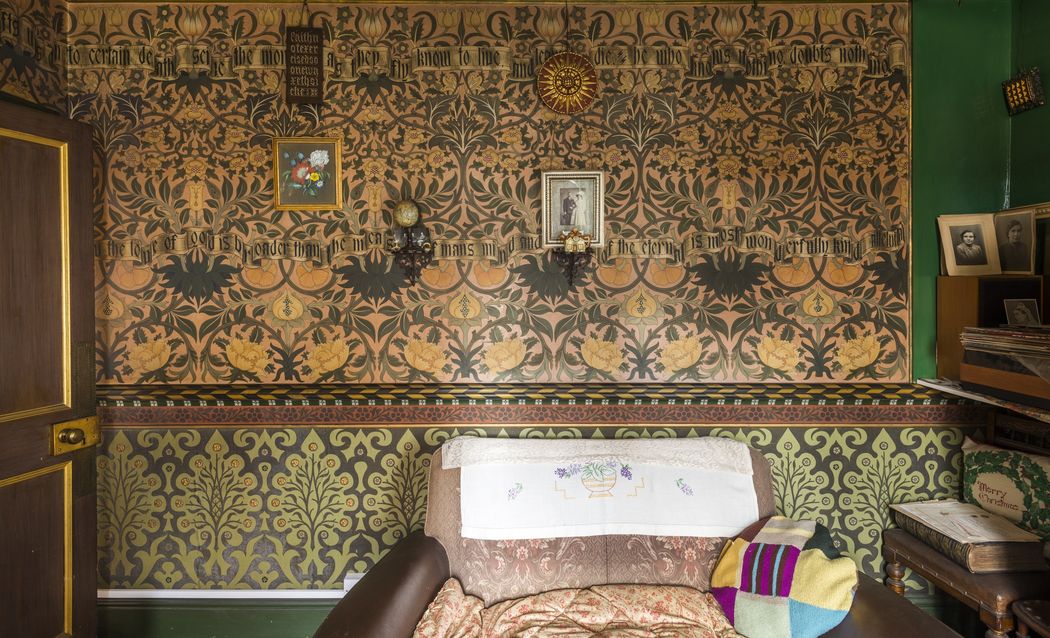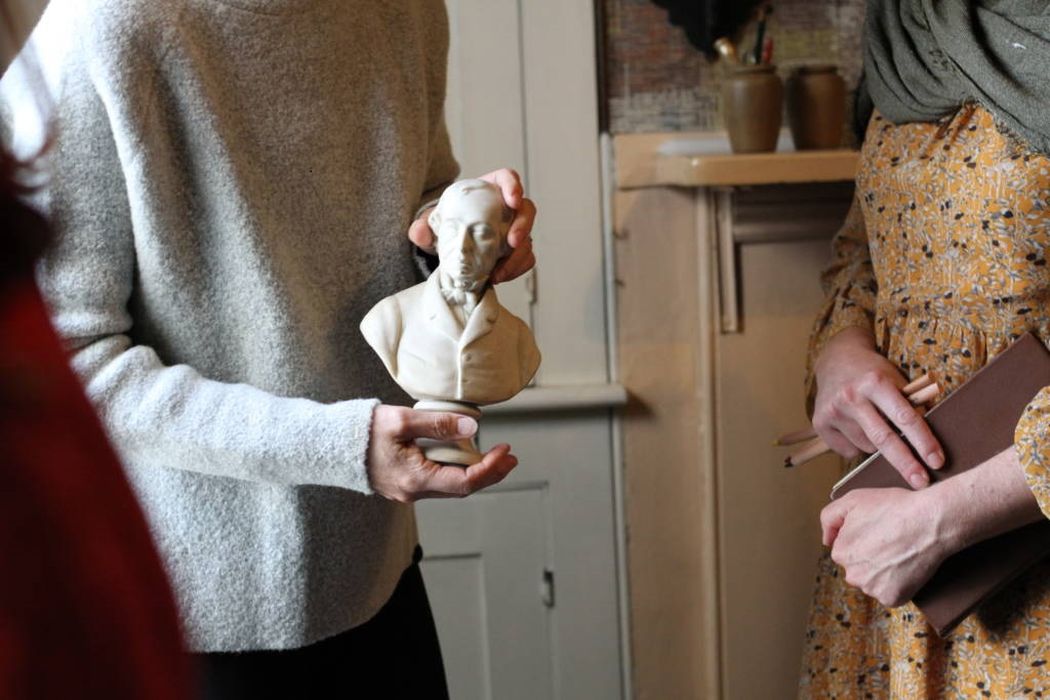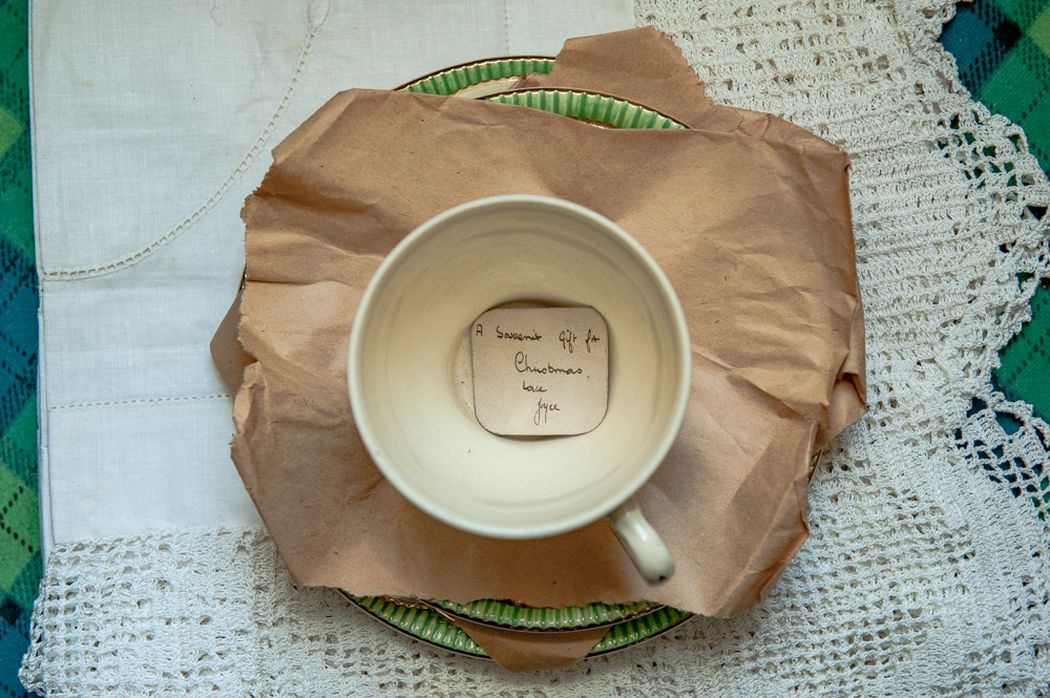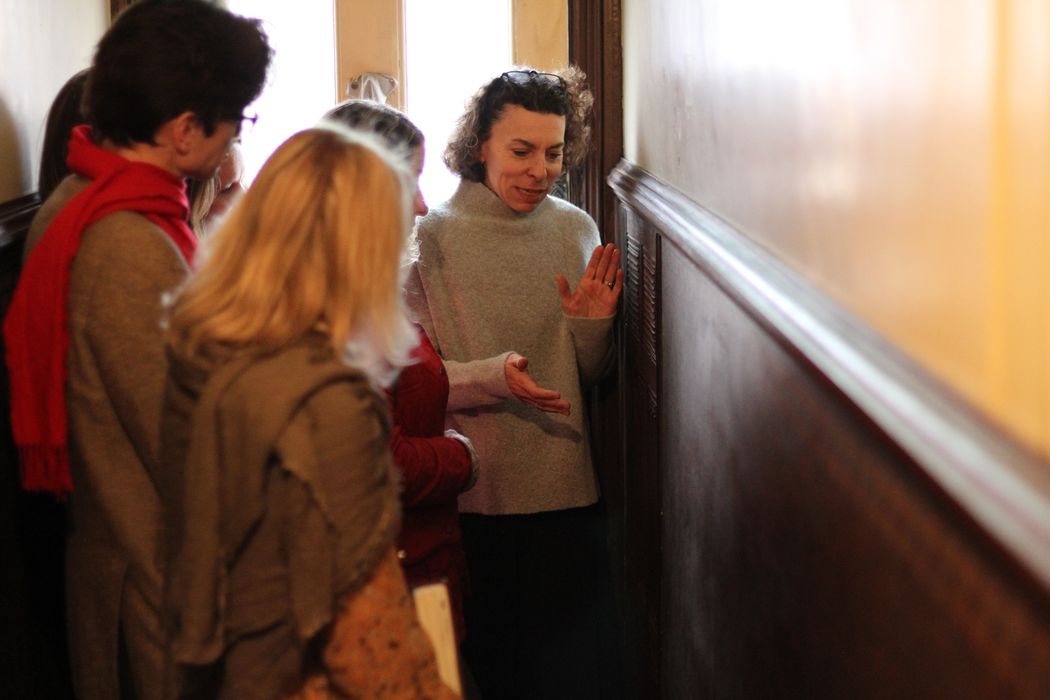Choreographed Conversations ‘en promenade’
Specialised tours inside a small Victorian terraced house
Artist's studio museums are by nature unconventional. Private spaces are opened up to the public and we are given the chance to explore the lives of our artists. These museums are magical precisely because they weren't originally intended to become museums. Instead they are lived in spaces, the literal homes of creativity and with this comes the practical difficulties of opening a home or studio to the public. The David Parr House is one of our museums with a limited physical footprint. Here Shelley Lockwood, Audiences and Volunteer Manager at the museum 2017-9, discusses how the museum team went about designing a tours programme for a very special terraced house.
-
The David Parr House in Cambridge (UK) is a small Victorian terraced house with an extraordinary painted interior which has survived almost completely intact through a century of being the backdrop to everyday family life. The rooms are small and full of furniture and objects accumulated over the period 1886-2012 when it was lived in by decorative artist David Parr and his family and then his granddaughter Elsie Palmer and her family. Although no longer a home, it is a place that is alive. The resonances of the lives lived within its painted walls prompt visitors' memories and enable them to renew their links with the historical and their personal past as well as inspire and connect them to their own creativity.
-
“Deciding how to interpret the space and allow visitors to move through the house in a meaningful and engaging way without damaging the very thing we are seeking to preserve was a challenge"
-
Deciding how to interpret the space and allow visitors to move through the house in a meaningful and engaging way without damaging the very thing we are seeking to preserve was a challenge. To set up the tours for the first year of opening to the public in May 2019, we drew on our experiences of visiting many other small house museums in the UK and elsewhere, alongside showing the house to local people, art historians, heritage conservation experts and others in the two years before being awarded two major National Lottery Heritage Fund grants in 2017.

Since re-opening in May 2019, following major conservation work, we offer guided tours of various kinds which must be booked and paid for in advance via our website. Both because of the restricted space and in order to protect the delicate walls, visitor numbers are limited to six per tour guided through the house by two volunteers: a House Guide and a Steward. No photography is allowed in the house and we ask for phones to be switched to silent so that everyone can focus on and enjoy the experience free from distractions. Volunteers model behaviour by not touching items or the walls themselves but also by being generally open and informal in their interactions with visitors and enthusiastic about why they love the house.
-
"We ask for phones to be switched to silent so that everyone can focus on and enjoy the experience free from distractions"
-
For visitors' comfort (there is no heating or chairs in the house itself), the length of time in the house is limited to no more than one hour. This is bookended by a warm welcome and introduction in our Visitor Centre and some additional time in the Activity Room (and shop) at the end of the tour. Every tour is choreographed so that, having been welcomed and introduced to the key figures in the history of the house in the Visitor Centre next door, visitors enter the David Parr House through the front door, move through the downstairs rooms and then go upstairs before leaving via the back garden and returning to the Visitor Centre. All tours have this 'shape' but the duration and content of the time in the Visitor Centre varies according to the type of tour experience being given. For example, our Special Tours include time for tea and cake and a longer chat whilst exploring our beautiful handling and interpretation resources. This provides an important sensory element of active touching of objects and materials which often prompts further sharing of memories or questions and comments about the house and the lives of the people who have called it home.

We have no written interpretation; the whole experience of visiting the house is guided by our trained volunteers. In training our volunteer House Guides we tried hard not to have a fixed 'script' or single narrative for the tour, but rather to develop core content which is communicated as stories rather than a series of facts. Although dates are good anchors and it is important that guides have the scaffolding underpinning their stories, visitors will not, on the whole, remember dates from the tour, but they will be engaged by stories, especially if they are delivered with genuine enthusiasm. To keep the interest and passion alive, we encourage personalisation; for each guide to do their tour their way and also to have the confidence to adapt their tour to each group of visitors. This avoids the staleness that can come from frequent repetition of the same information. As some of our guides also volunteered as collection cataloguers, they have detailed stories to share from paying close attention to specific objects in the house when cleaning and researching them and others knew family members and can share specific memories of them.
-
“We have no written interpretation; the whole experience of visiting the house is guided by our trained volunteers”
-
We listened carefully to our early visitors, especially those from the local community who have walked past the house every day for many years, some of whom knew the family, and we wove their comments and memories into the conversations we planned to have on the tours. An example of this was the fact that we refer to David Parr's granddaughter as 'Elsie' because this is how we personally knew her and because it is a reminder of the 12-year old girl who first moved into the house in 1927. However, recording the memories of neighbours and listening to local people on tours, we learnt that Elsie was always known, even to people she had known for many years, as 'Mrs Palmer' and so this is now acknowledged and spoken about in the tour. We are learning in this way all the time and adapting and adding to the tour content.

The house tours have moments of genuine awe and wonder built in, where visitors are given time to look and process what they are seeing in silence, just for a few moments, in the main rooms. But there is also lots of learning in terms of new vocabulary about materials and techniques and detailed information about how and when David Parr decorated his home. The learning very quickly becomes two-way, with our visitors bringing their own knowledge and experiences into the conversation and, before long, feeling connected to their own memories and sharing those too.
-
“The learning very quickly becomes two-way, with our visitors bringing their own knowledge and experiences into the conversation”
-
We also run a specialist wall paintings tour and this will be a model for how we shall develop future tours, using new voices and different perspectives. The steward for these tours is one of our trained house guides who manages the warm welcome, brief introduction and choreography through the house, as well as answering and responding to any visitor questions relating to the house and its occupants more widely. The guide for these tours is a volunteer but is also an expert paint conservator and she has developed her own core content, based on her expert knowledge and experience. Her tour also includes the use of specific image boards within the house to highlight techniques etc. The time at the end of the tour for tea and cake then also becomes additional 'privileged access' time with an expert which adds value to the experience for many.

In opening up a family home, we are always walking a line between being in a public and a private space. With our 'Secret' tour, where some cupboards and drawers in the house are opened to reveal hidden objects, it was important to combat potential charges of voyeurism around looking into the private spaces of past lives lived. One way to do this was to give permission and remind guides only to show and talk about what they felt comfortable doing but we also trained guides to 'zoom out' from the specific object and personal story to the bigger picture and wider context. For example, a pair of woollen bedsocks in a drawer speaks of the lack of heating and what that meant for the ways we used to live in our homes, especially bedrooms, and to discuss how that has changed.
-
"Our tours have become choreographed conversations 'en promenade' through our little memory palace of life and art"
-
In these ways, the various stories of the house become more like conversations as visitors respond, ask questions and contribute their own thoughts, memories and experiences. Our tours have become choreographed conversations 'en promenade' through our little memory palace of life and art - so far, I'm delighted to say, our visitors seem to like it!
Written by Dr Shelley Lockwood, Audiences and Volunteer Manager, David Parr House 2017-9.
Read more about the David Parr House here and discover more about visiting David Parr House here
